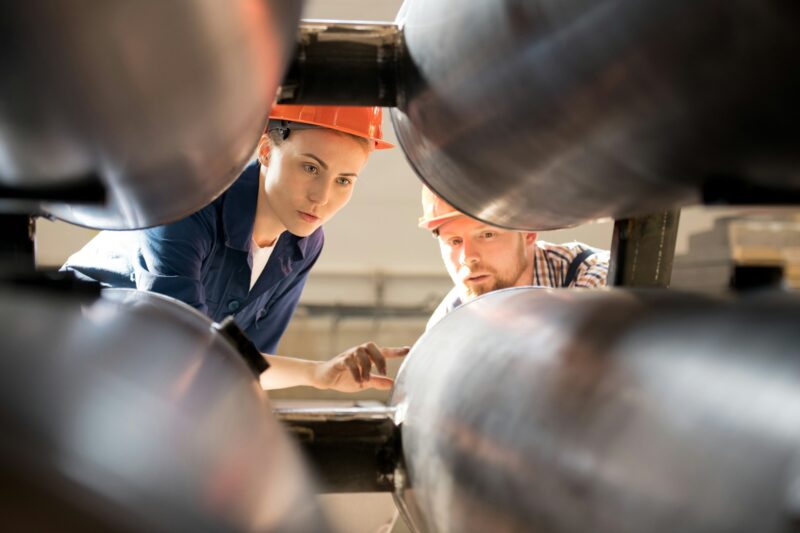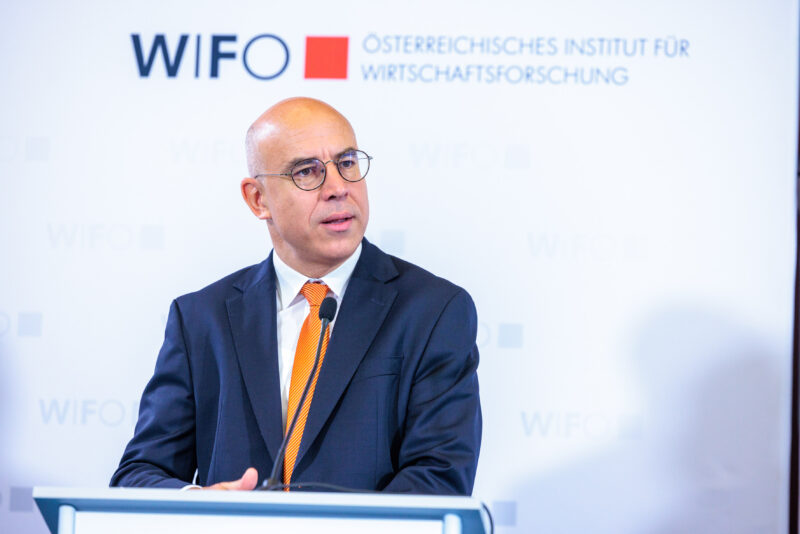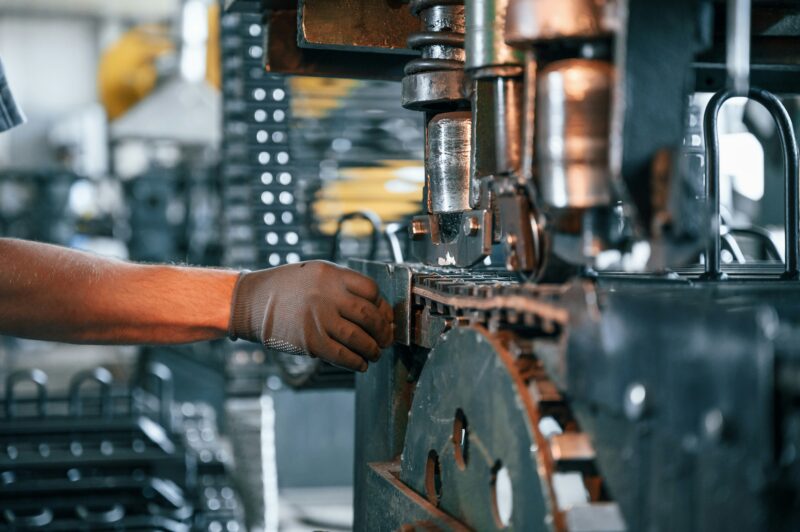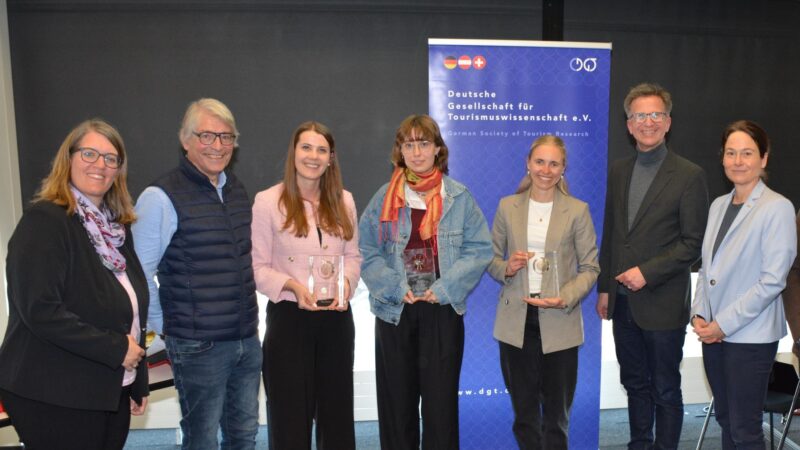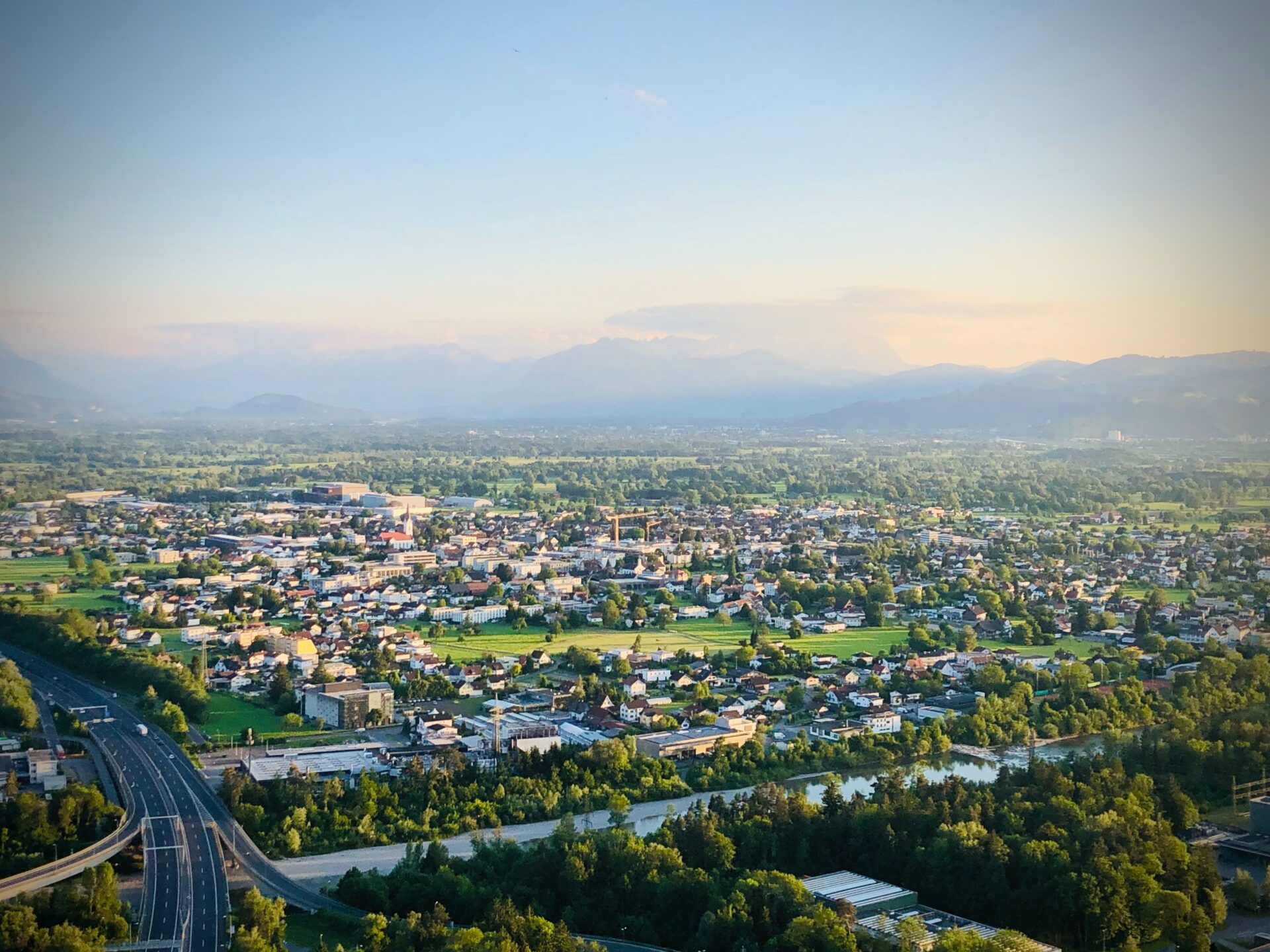
Weakening of the Economy in all Federal Provinces
Employment dynamics also declined in the third quarter, although in some federal provinces the average employment growth in 2022 was stronger than in the previous year. This is partly due to regional differences in economic development by sector. WIFO expects Austria's economic output to stagnate in 2023.
Slowdown in the development of manufacturing activity with increasing upward pressure on prices
After the growth rates of manufacturing had been around 8 percent until the summer of 2022 following the recovery from the COVID-19 crisis, the production index in the third quarter of 2022 was only 5 percent higher than in the previous year. This corresponds to a growth in gross value added in manufacturing of only around 1 percent (in real terms). Due to high price increases, there was an uneven development of sales and employment: while the value of production sold increased in the third quarter by 14 percent throughout Austria (in the provinces the increase was between +7 percent in Tyrol and +21 percent in Burgenland), employment increased by only 2 percent (Salzburg +0.8 percent, Burgenland +3.8 percent). The basic sentiment of companies in the sector remains pessimistic according to the WIFO-Konjunkturtest (business cycle survey). A decline in real value added and goods exports is expected for 2023.
Price development leads to decline in real construction investments
In the third quarter of 2022, there was a decline in real construction investments, as in the previous quarter, according to the quarterly calculation of Statistics Austria. In addition to a (once again) significant decline in real residential construction investment, non-residential construction also recorded a real decline in construction investment for the first time. The decisive factor here continues to be an enormous increase in construction costs and construction prices. But the development of nominal construction production also lost momentum recently, whereby there are noticeable differences between the federal provinces. In Carinthia, for example, the dynamics of construction production even accelerated in the course of the year, while in Styria it remained comparatively stable. The development of incoming orders and the results of the business surveys point to a stabilisation of the construction industry towards the end of 2022.
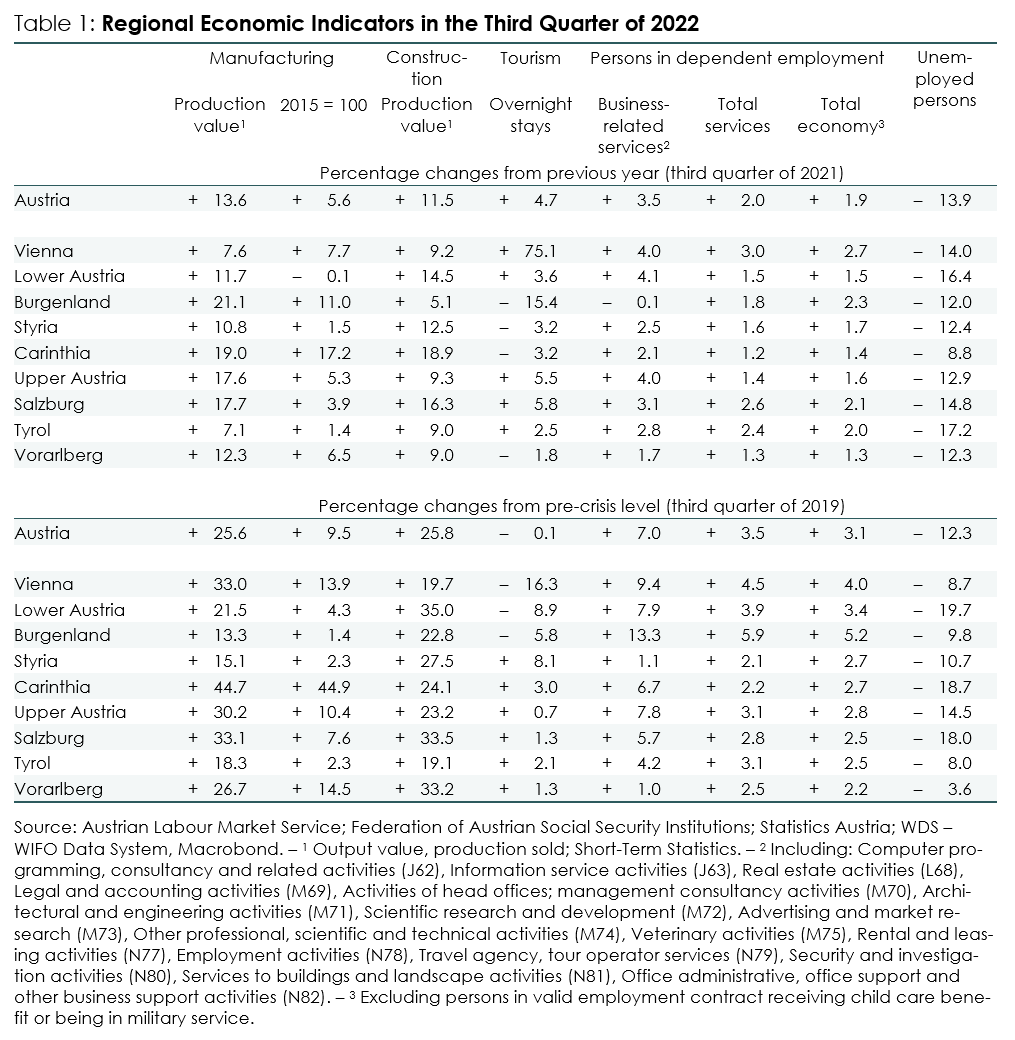
Tourism demand in the third quarter even stronger than in the entire summer season
After a very pleasing development of tourism demand in the summer, the pre-crisis level of overnight stays was exceeded in almost all federal provinces in the third quarter. Only in Vienna (–16 percent compared to the third quarter 2019), in Lower Austria (–9 percent) and in Burgenland (–6 percent) a demand gap remained. Although the number of overnight stays in Vienna expanded by 75 percent compared to the previous year, this reflects the recovery of tourism in Vienna, which was hampered by the disproportionately high share of foreign tourists. Overall, Austrian summer tourism (May to October 2022) reached a new peak in domestic overnight stays, and foreign tourism demand almost returned to pre-crisis levels in 2022 as a whole. The positive development of tourism is also reflected in the labour market: in the second half of 2022, for the first time, more employment relationships were recorded throughout Austria than before the COVID-19 crisis. The number of unemployed in the accommodation and catering sector fell to a low not seen since 2008.
Lower employment dynamics in the second half of the year
Although employment lost momentum in the course of the year in line with the economic development, employment growth in 2022 was higher than in the previous year. There was even an increase in employment growth in the fourth quarter compared to third quarter, but this was due to a relatively low starting level due to a lockdown in the fourth quarter of 2021. In both the third and the fourth quarters, Vienna recorded the highest employment growth with +2.7 and +2.9 percent respectively, Vorarlberg the lowest with +1.3 and +1.2 percent. For 2023, the current WIFO Economic Outlook (from December 2022) expects noticeably lower employment growth.















